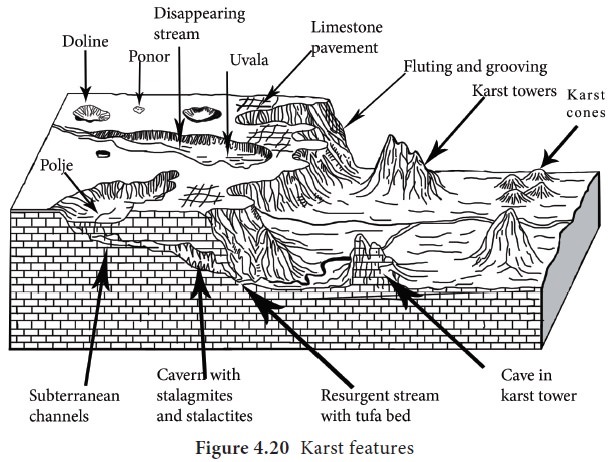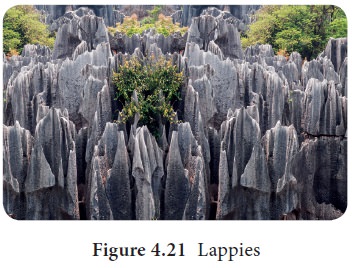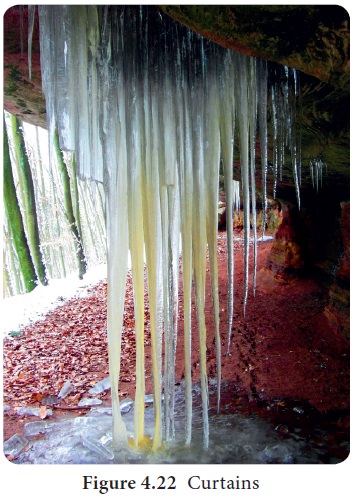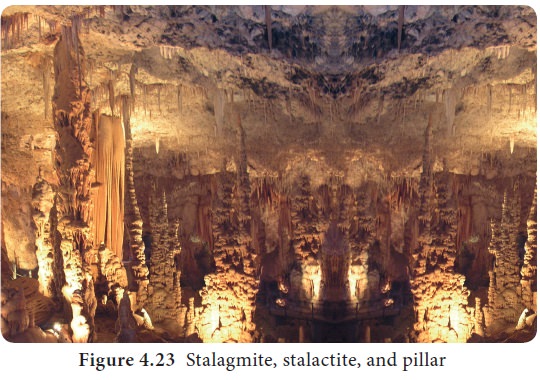Chapter: 11th Geography : Chapter 4 : Lithosphere: Exogenic Processes
Ground water (Karst Topography)
Ground
water (Karst Topography)
The word “karst” literally means “rocky mountain”
comes from a region in former Yugoslavia that includes Croatia and Slovenia.
The word is derived from the Slavic word Kras.
What does Groundwater do?
Any limestone, dolomite or gypsum region showing
typical landforms produced by the action of groundwater through the process of
solution and deposition is called as Karst Topography (Karst region in the
Balkans).
Erosional Landforms due to Groundwater
Following are the erosional landforms formed due to
the action of groundwater.
1. Sinkholes
A sinkhole is an opening more or less circular at
the top and funnel-shaped towards the bottom. When as sinkhole is formed solely
through the process of solution, it is called as a solution sink.

2. Doline
A doline is a closed depression draining
underground in karst areas. It can be cylindrical, conical, bowl or dish
shaped. The diameter ranges from a few meter to many hundreds of meters. The
name doline comes from dolina, the Slovenian word meaning valley.
3. Lappies
Lappies are the irregular grooves and ridges formed
when most of the surfaces of limestone are removed by solution process.

4. Uvala
Series of smaller sinkholes coalesce into a
compound sinkhole is called uvala.
5. Polje
Polje is an elongated basin having a flat floor and
steep walls. It is formed by the coalescence of several sinkholes. The basins
often cover 250 square km and may expose “disappearing streams.” Most of these
basins have steep enclosing walls that range from 50 to 100 meter in height,
giving rise to the name “blind valley.”
6. Caves
Caves normally have an opening through which cave
streams are discharged. Caves having an opening at both the ends are called
tunnels.

Depositional Landforms due to Ground water
The following depositional features are formed
within caves.

1. Curtains
Rain water drips from long crack in a cave roof
forms a continuous strip of calcites. It is called as curtains.
2. Stalactite
Drops of water containing dissolved limestone seep down through cracks in the cave roof. Drops of water lose carbon dioxide and deposit calcite. Overtime deposition of calcite forms pillars hanging down from the roof of the cave. It is called as stalactite and where the stalactite stretches towards the sides are known as Helactites.
3. Stalagmite
Deposition of calcite forming icicles growing
upward from the cave floor is called as stalagmite.
Stalactites are calcium carbonate deposits hanging as icicles while Stalagmites are calcium carbonate deposits which rise up from the floor.
4. Pillar
When both the stalagmite and stalactite join
together, it is known as pillar.
Related Topics